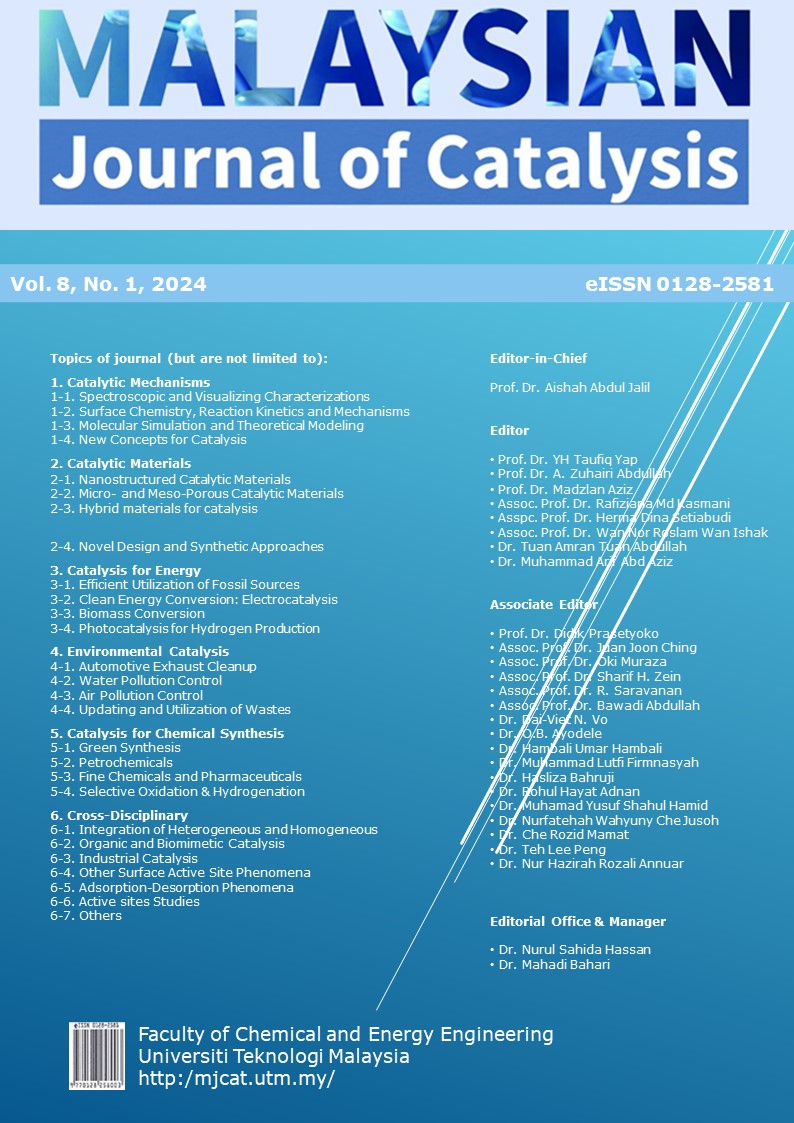Effect of Tea Waste Extract Volume on Synthesis of TiO2 for Photodegradation of 2,4-dichlorophenol
DOI:
https://doi.org/10.11113/mjcat.v8n1.180Keywords:
Tea waste extract; TiO2 nanoparticles; Extract volume; Photocatalytic degradation; 2,4-dichlorophenolAbstract
The volume effect of tea waste extract was studied in synthesis of titanium dioxide (TiO2) namely TiO2-1 (1 mL), TiO2-3 (3 mL) and TiO2-5 (5 mL). The catalysts were characterized by XRD, FTIR, BET, UV-Vis DRS and FESEM. The role of tea waste extract in formation of TiO2 was tested to degrade 2,4-dichlorophenol (2,4-DCP) under visible light irradiation. The best photocatalytic degradation of 2,4-DCP was achieved using TiO2-1 (85%) compared with TiO2-3 (80%), TiO2-5 (77%) and P25 (71%). Furthermore, the optimum volume of tea waste extract was 1 mL and the results show that increasing volume of tea extract increased the band gap and crystallite size, while the surface area was decreased. The role of tea waste extract as capping agent in synthesis of TiO2 contributed significantly to the good photocatalytic degradation of 2,4-DCP.

Downloads
Published
How to Cite
Issue
Section
License

This work is licensed under a Creative Commons Attribution-NonCommercial 4.0 International License.
The Malaysian Journal of Catalysis publishes open access articles under the terms of the Creative Commons Attribution (CC BY) License which permits use, distribution and reproduction in any medium, provided the original work is properly cited.Â
The Department of Chemistry, Faculty of Science, UTM retains the Copyright on any research article published by Malaysian Journal of Catalysis.
Authors grant Malaysian Journal of Catalysis a license to publish the article and identify itself as the original publisher.















